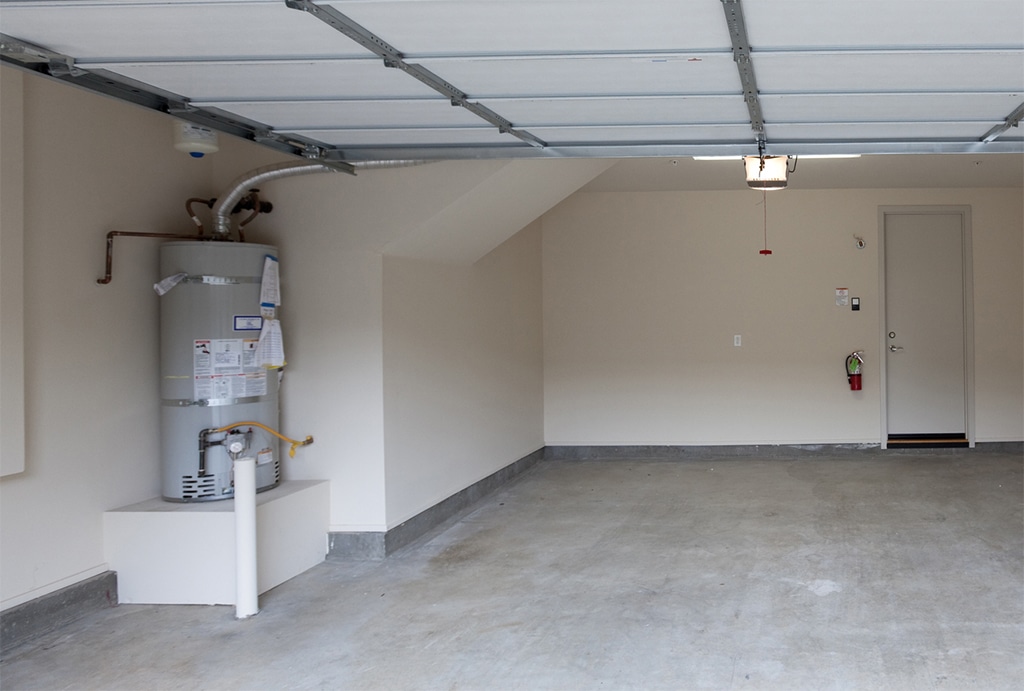
Where Is The Best Area For Your Tank-Style Water Heater Installation? | Richardson, TX
Tank-style water heaters, whether powered by electricity or gas, are not designed to be exposed to the elements and need shelter if installed outside or in non-climate controlled areas. Typically, your water heater installation in Richardson, TX is located in the garage, attic, or basement, though some choose to install in a designated utility closet.
Some new tankless water heaters can be used outdoors. In newer areas of the DFW metro, you may have noticed that tankless water heaters are located in exterior metal cabinets that are recessed into the brickwork or stucco siding. As with tank-style water heaters, the pipes that supply the tankless heater must still be insulated.
The garage, regardless of whether you have a tank-style or tankless water heater installation, is often the best location for homes within the DFW metropolitan area. The damage to your home is usually minimal if the unit fails or leaks here. A garage, however, is typically not climate controlled, so any exposed plumbing to the heater should be insulated. The water heater itself is protected against freezing as long as it is powered on and has a working fuel supply.
It was more common to install water heaters inside homes built before 1970. Older homes typically have gas water heaters. These are usually located next to the gas furnace in the laundry area, or you may find the water heater installation in a separate mechanical/utility cupboard. This trend has declined over the past 50 years, but hasn’t disappeared completely. For one reason or another, you will still find newer homes with the electric or gas water heater tank in an inside closet.
This approach has the advantage that the water heater is usually located centrally, so it takes very little time to heat the fixtures. These water heaters also make it easier for homeowners to inspect more often. One reason installing a water heater inside the home has become less appealing is because they can cause more damage to your home if they leak. Your interior water heater installation will typically come fitted with an emergency drain pan underneath. However, a catastrophically leaking heater can easily surpass the drain piping or the small pan. Unfortunately, this is something that plumbers see quite often.
People who own interior water heaters may be interested in moving them to another location. This will allow the closet space to be repurposed. Moving a water heater can be costly. It involves rerouting gas pipes, water lines, and vent ducting. However, it can be worth considering when it’s time to replace the existing water heater once it reaches the end of its expected lifespan. You can combine the change in location of the water heater with your new water heater installation.
The attic space is another popular location for tank-style water heaters in Richardson, TX. It has been used in many homes over the past 50 years. It doesn’t take up any usable living space and keeps the heater out of view. Unfortunately, however, the attic is the most dangerous place to install an electric or gas water heater. Because they are out-of-sight/out-of-mind, they are rarely inspected by the average homeowner. They can leak into the ceilings, causing damage to the flooring and furnishings below.
As a way to reduce this risk, many people turn to tankless water heater installation. Although tankless water heaters do not have the same predictable failure time as traditional tank-style heaters, they are equally susceptible to leaking or causing damage when they fail.
Location Requirements
Clearance and adequate ventilation are two things that limit the location of a water heater. Power vents rely on indoor air circulation. They must be placed in an area that is both large and has vents to allow maximum air flow. Direct vents, on the other hand, must draw air from outside. If your water heater installation is using a direct vent system, it is okay to place them in tight areas, such as cabinets and cupboards.
Ventilation Requirements
Tankless water heaters have variable ventilation requirements, which is a significant improvement on their tank-style predecessors. Special modifications are therefore required. Regardless of water heater type, you will likely need a location with access to stainless steel or other metal ductwork to vent safely from the unit. The only way to avoid this is to use a location with a condensing unit; then you can vent through PVC pipes. The two primary ventilation methods used in water heater installation are:
Power Ventilation: This method uses indoor air to ignite the combustion process, and then the air is blown outside via the vents.
Direct Ventilation: This is when air is taken from outside and used for both intake and exhaust ventilation.
No matter what type of venting is required, it must use Grade 3 material, a.k.a. materials resistant to corrosion and capable of preventing carbon monoxide leaks.
Electricity Requirements
Although it sounds strange, electricity is an important factor to consider before installing a hot water heater. Although it might require gas to operate, electricity is still needed for the digital remote control and PC board. To ensure that your computer functions properly, you need at least 120 volts.
Time to Consider Moving or Replacing Your Water Heater?
Your water heater’s age is an indicator of whether it will need to be replaced or repaired. A standard water heater will eventually have problems after a decade of continuous use. Although it may seem like a small leak initially, pinhole leaks can quickly escalate into expensive problems.
Other signs that your water heater is having problems are unusual sounds and rusty water. Your water heater could be having problems with corrosion. If your hot water is making unusual noises and making loud, rumbling or knocking sounds, it could be an indication that sediment has built up in the tank. This needs to be cleaned out. Call bluefrog Plumbing + Drain of North Dallas – Richardson, TX if you want to move, repair, or replace your water heater installation.




















